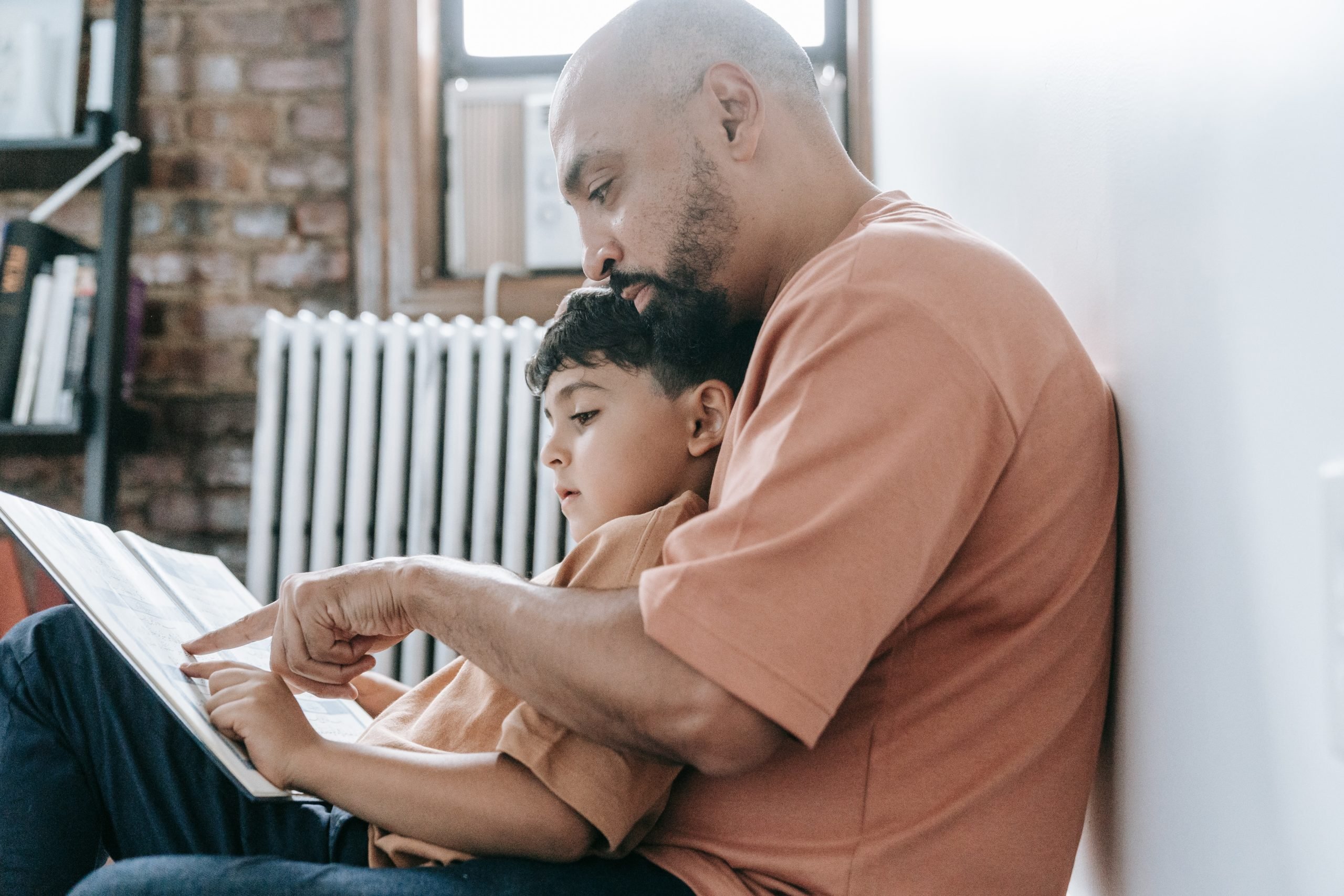Advanced Narratives: Development of a Full Understanding of Story Structure and More Complex Communication Skills
Here is a list of the books your child may be reading in Stage 3 intervention. You may wish to sign this book out from the library, or have a conversation about the story with your child. You can also borrow a virtual copy of some of the LITES books through UGDSB. Instructions on how to access LITES e-Books and Audiobooks can be found by clicking this link:
How to Access LITES eBooks and Audiobooks
Book 1A: Russell the Sheep
By: Rob Scotton Listen to this book being read aloud
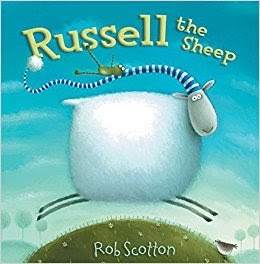
Target Vocabulary: cramped, hollow, creepy, scary, crowed, brilliant
Story Elements: setting, characters, problem, actions, plan, obstacle, solution, ending, feelings
As you talk about the story with your child, use the target vocabulary listed above. When retelling the story together, model a complex sentences by using the word “because” to talk about the why the character acted as they did and why they felt as they did.
Book 1B: Russell and the Lost Treasure
By: Rob Scotton Listen to this book being read aloud
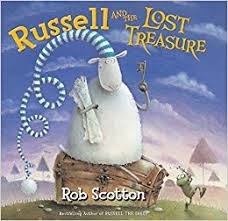
Story Elements: setting, characters, problem, actions, plan, obstacle, solution, ending, feelings
Story Discussion: After reading or listening to the Russell the Sheep stories, you could ask your child, “How are the books the same? How are they different? Which one did you like better? Why?”
Book 2A: Emma and the Coyote
By: Margriet Ruurs Listen to this book being read aloud
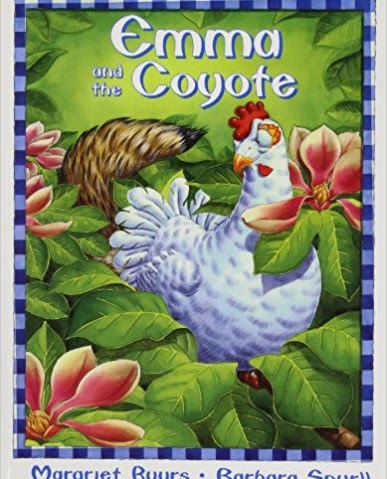
Target Vocabulary: munched, sprinted, scurried, gobbled, raced, spied, racket, dashed, hero, suspicious, trembled, brave
Story Elements: setting, characters, problem, actions, plan, obstacle, solution, ending, feelings
As you talk about the story with your child, use the target vocabulary listed above. When retelling the story together, model a complex sentences by using the word “because” to talk about the why the character acted as they did and why they felt as they did.
Book 2B: Emma’s Cold Day
By: Margriet Ruurs Listen to this book being read aloud
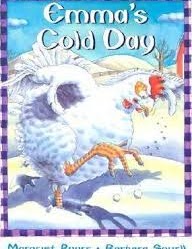
Story Elements: setting, characters, problem, actions, plan, obstacle, solution, ending, feelings
Story Discussion: After reading or listening to the 2 Emma stories, you could ask your child, “How are the books the same? How are they different? Which one did you like better? Why?”
Book 3A: The Gingerbread Man
By: Karen Schmidt Listen to this story read aloud
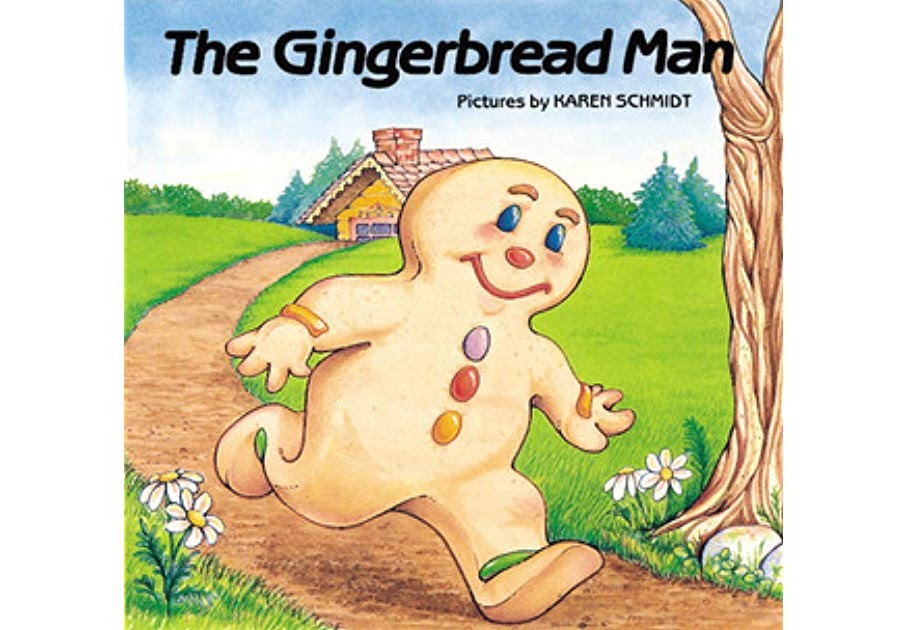
Target Vocabulary: chuckled, sly, sow, grazing, decorate, pasture, leap, rising; synonyms for: run, fast
Story Elements: setting, characters, problem, actions, plan, obstacle, solution, ending, feelings
As you talk about the story with your child, use the target vocabulary listed above. When retelling the story together, model complex sentences by using the word “if then” to talk about what might happen.
Book 3B: The Gingerbread Girl
By: Lisa Campbell Ernst Listen to this story read aloud
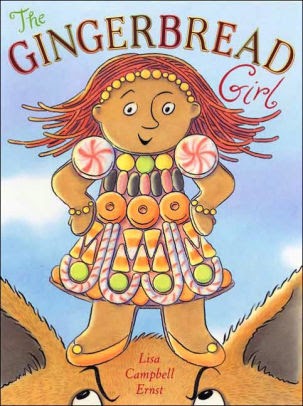
Story Elements: setting, characters, problem, actions, plan, obstacle, solution, ending, feelings
Story Discussion: After reading or listening to the 2 Gingerbread stories, you could ask your child, “How are the books the same? How are they different? Which one did you like better? Why?”
Book 3C: The Gingerbread Baby
By: Jan Brett Listen to this story read aloud
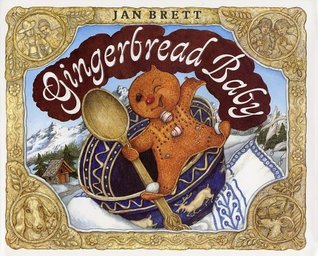
Story Elements: setting, characters, problem, actions, plan, obstacle, solution, ending, feelings
Story Discussion: After reading or listening to the other 3 Gingerbread stories, you could ask your child, “How are the books the same? How are they different? Which one did you like better? Why?”
Book 4A: The Little Red Hen
By: Paul Galdone Listen to the story read aloud
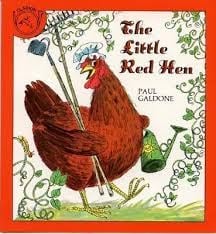
Target Vocabulary: snooze, fair, nap, ground/grind, cozy, strolled, delicious, scampered, eager
Story Elements: setting, characters, problem, actions, plan, obstacle, solution, ending, feelings
As you talk about the story with your child, use the target vocabulary listed above. When retelling the story together, model complex sentences by using the word “if then” to talk about what might happen.
Book 4B: The Little Red Hen Makes Pizza
By: Philemon Sturges Listen to the story read aloud
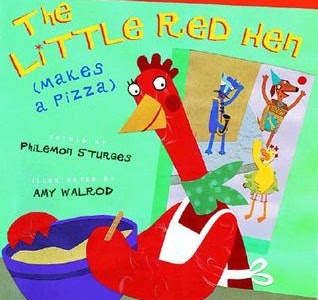
Story Elements: setting, characters, problem, actions, plan, obstacle, solution, ending, feelings
Story Discussion: After reading or listening to the 2 Little Red Hen stories, you could ask your child, “How are the books the same? How are they different? Which one did you like better? Why?”
Book 5A: Apple Trouble/Ouch
By: Ragnhild Scamell Listen to the story read aloud
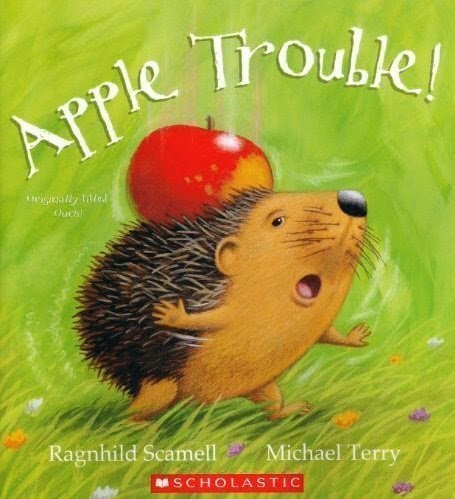
Target Vocabulary: scurrying, worried, hibernation, struggled, heaved, trotted, reflection, murky
Story Elements: setting, characters, problem, action, plan, obstacle, solution, ending, feelings
As you talk about the story with your child, use the target vocabulary listed above. When retelling the story together, model complex sentences by using the word “if then” to talk about what might happen.
Book 5B: The Hat
By: Jan Brett Listen to the story read aloud
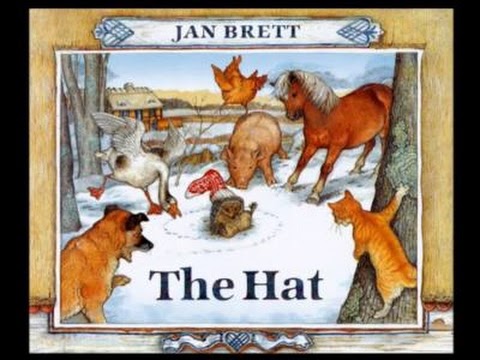
Story Elements: setting, characters, problem, action, plan, obstacle, solution, ending, feelings
Story Discussion: After reading or listening to Apple Trouble and The Hat, you could ask your child, “How are the books the same? How are they different? Which one did you like better? Why?”
Book 6A: Where’s My Hockey Sweater?
By: Gilles Tibo Listen to this story read aloud
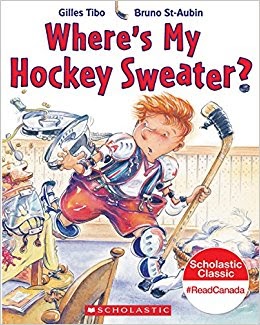
Target Vocabulary: snuggled, hunted, responsibility, rummaged, wedging, hockey equipment (shoulder pads, shin guards, helmet, hockey pants, sweater/jersey, skates, mouth guard, stick, neck protector)
Story Elements: setting, characters, problem, actions, plan, obstacle, solution, ending, feelings
As you talk about the story with your child, use the target vocabulary listed above. When retelling the story together, model complex sentences by using “but” to introduce each obstacle and “so” to talk about how the character tries to solve the problem.
Book 6B: The Best Goalie Ever
By: Gilles Tibo Listen to this story read aloud
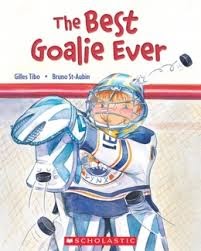
Story Elements: setting, characters, problem, actions, plan, obstacle, solution, ending, feelings
Story Discussion: After reading or listening to the 2 Hockey stories, you could ask your child, “How are the books the same? How are they different? Which one did you like better? Why?”
Book 7A: Stanley’s Party
By: Linda Bailey Listen the story read aloud
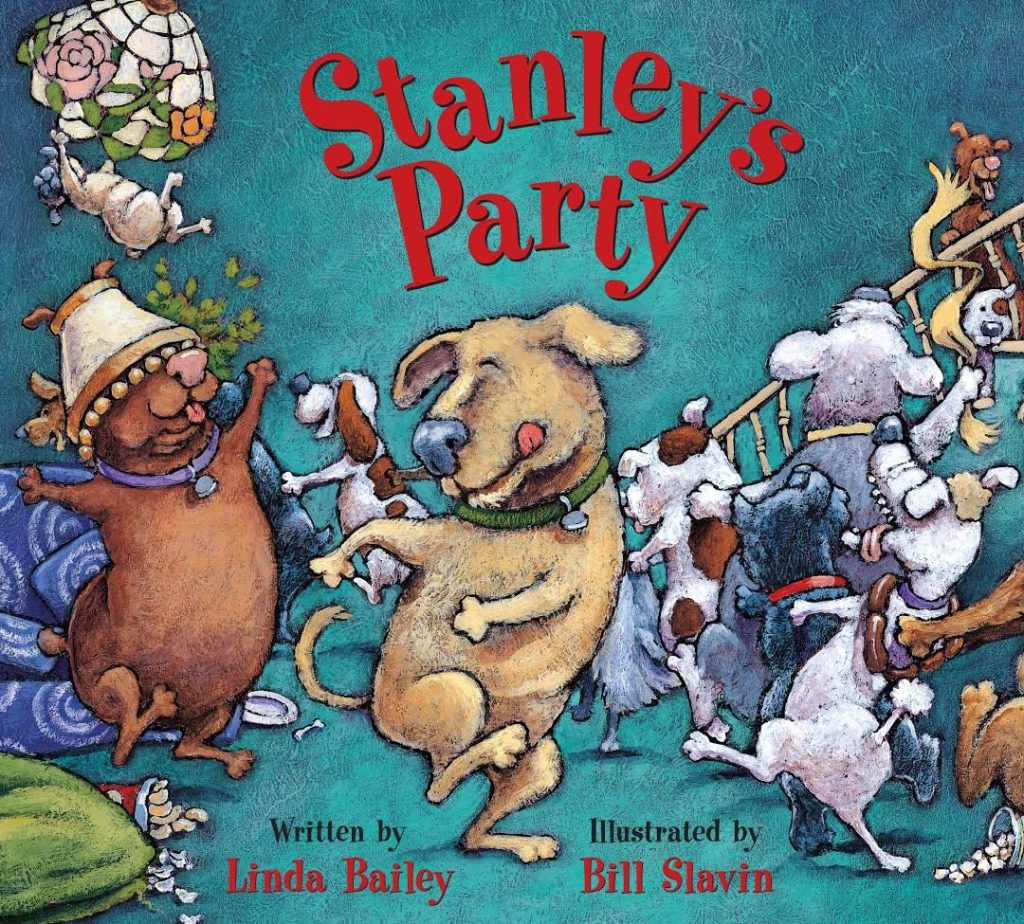
Target Vocabulary: obedient, disobedient, lounge, clever, nibble, gather, curious, midnight
Story Elements: setting, characters, problem, actions, plan, obstacle, solution, ending, feelings
As you talk about the story with your child, use the target vocabulary listed above. When retelling the story together, model a complex sentence by using “while” to talk about what was happening at the same time as the character was attempting to overcome obstacles and solve the problem.
Parallel story: Stanley’s Wild Ride
Book 7B: Stanley’s Wild Ride
By: Linda Bailey Listen to this story read aloud
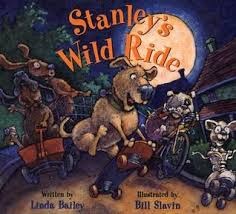
Story Elements: setting, characters, problem, actions, plan, obstacle, solution, ending, feelings
Story Discussion: After reading or listening to the 2 Stanley the Dog stories, you could ask your child, “How are the books the same? How are they different? Which one did you like better? Why?”
Book 8A: Wanda and the Frogs
By: Barbara Azore Listen to the story being read aloud
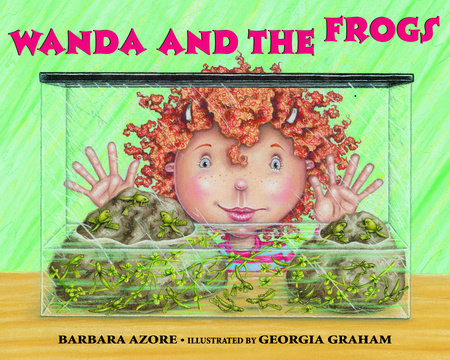
Target Vocabulary: ravine, shallow, scooped, wriggling, thrashed, borrowed, miserable, shrieked, colliding
Story Elements: setting, characters, problem, actions, plan, obstacle, solution, ending, feelings
As you talk about the story with your child, use the target vocabulary listed above. When retelling the story together, model a complex sentence by using “while” to talk about what was happening at the same time as the character was attempting to overcome obstacles and solve the problem.
Book 8B: Wanda and the Wild Hair
By: Barbara Azore Listen to the story being read aloud
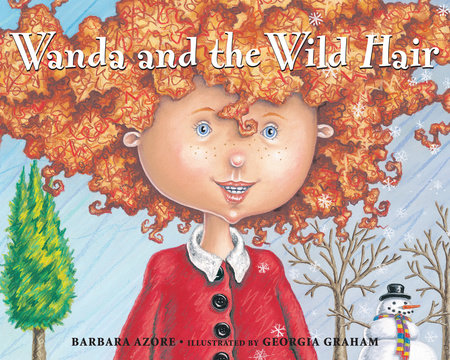
Story Elements: setting, characters, problem, actions, plan, obstacle, solution, ending, feelings
Story Discussion: After reading or listening to the 2 Wanda stories, you could ask your child, “How are the books the same? How are they different? Which one did you like better? Why?”
Book 9: The Most Magnificent Thing
By: Ashley Spires Listen to this book read aloud
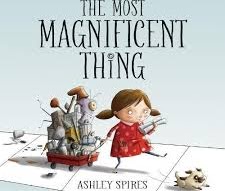
Target Vocabulary: magnificent, assistant, failure, frustrated, admired, explodes, examines, succeed
Story Elements: setting, characters, problem, actions, plan, obstacle, solution, ending, feelings
As you talk about the story with your child, use the target vocabulary listed above. When retelling the story together, model a complex sentence by using “but” to introduce about the obstacles and “so” to talk about what the character does to overcome them.
Book 11A: The Final Game
By: William Roy Brownridge Listen to the story being read aloud
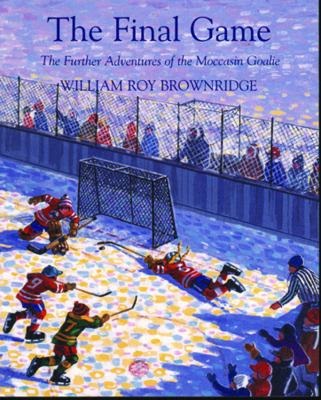
Target Vocabulary:
Story Elements: setting, characters, problem, actions, plan, obstacle, solution, ending, feelings
Discussion: After reading or listening to both Hockey stories, you could ask your child, “How are the books the same? How are they different? Which one did you like better? Why?”
Book 11B: The Moccasin Goalie
By: William Roy Brownridge Listen to the story being read aloud

Target Vocabulary: supportive, loyalty, moccasin, impatient, gleaming, anxiously, disappointed, pounding, impossible, victory
Story Elements: setting, characters, problem, actions, plan, obstacle, solution, ending, feelings
As you talk about the story with your child, use the target vocabulary listed above. When retelling the story together, model a complex sentence by using “but when” to talk about the character’s plan and the obstacles that arose.
Book 12A: Stanley at Sea
By: Linda Bailey Listen to the story read aloud
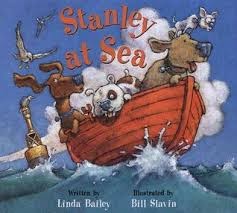
Target Vocabulary: drifted, bridge, begging, slumped, trembled, glorious, scrumptious, magnificent, shocked, rescued
Story Elements: setting, characters, problem, actions, plan, obstacle, solution, ending, feelings
As you talk about the story with your child, use the target vocabulary listed above. When retelling the story together, model a complex sentence by using the word “unless” to describe conditions that must be met for the character to solve the problem
Book 12B: Stanley at School
By: Linda Bailey Listen to the story read aloud
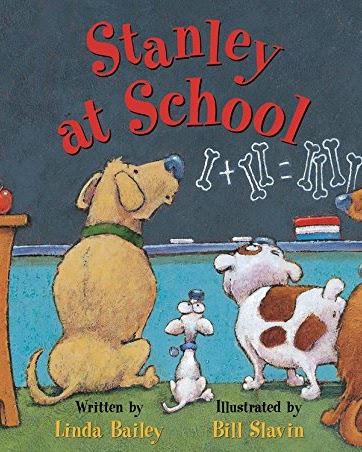
Target Vocabulary: obedient, disobedient, bold, daring, curious, salami, clamped, awfully, important
Story Elements: setting, characters, problem, actions, plan, obstacle, solution, ending, feelings
Discussion: After reading or listening to both Stanley the Dog stories, you could ask your child, “How are the books the same? How are they different? Which one did you like better? Why?”
Book 13: The Balloon Tree
By: Phoebe Gilman Listen to the story read aloud
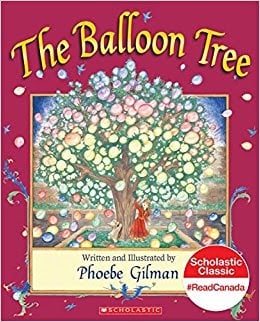
Target Vocabulary: invitation, dungeon, wizard, evil, worried, sunrise, grumpy, blossom, millions, spoiled, heroine
Story Elements: setting, characters, problem, actions, plan, obstacle, solution, ending, feelings
As you talk about the story with your child, use the target vocabulary listed above. When retelling the story together, model a complex sentence by using the words “even though”. For example, “The tree grew balloons even though in real life, balloons do not grow on trees.”
Book 14A: The Gruffalo
By: Julia Donaldson Listen the story read aloud
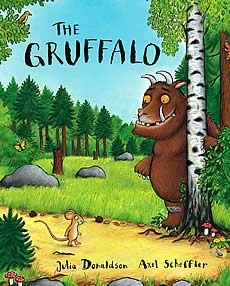
Target Vocabulary: stroll, knobbly, poisonous, feast, scrambled, bursting, astounding, fled, “quick as the wind”, rumble, prickles, amazing, stream, creature; compare “predator” vs. “prey
Story Elements: setting, characters, problem, actions, plan, obstacle, solution, ending, feelings
As you talk about the story with your child, use the target vocabulary listed above. When retelling the story together, model a complex sentence by using the words “even though”. For example, “Even though the mouse was small, he scared the fox”
Book 14B: The Gruffalo’s Child
By: Julia Donaldson Listen the story read aloud
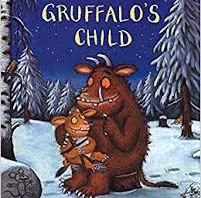
Story elements: setting, characters, problem, actions, plan, obstacle, solution, ending, feelings
Story Discussion: After reading or listening to both Gruffalo stories, you could ask your child, “How are the books the same? How are they different? Which one did you like better? Why?”
Book 15A: How I Became a Pirate
By: Melinda Long Listen to the story read aloud
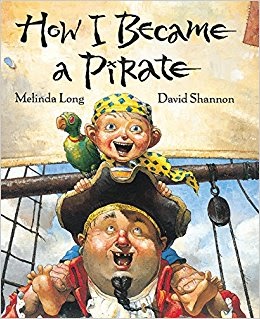
Target Vocabulary: off-key, skull and crossbones, announces, set sail, roared, bellowed, moat, landed, matey, swabbing the deck, down the hatch, shore
Story Elements: setting, characters, problem, actions, plan, obstacle, solution, ending, feelings
As you talk about the story with your child, use the target vocabulary listed above. When retelling the story together, model a complex sentence by using the words “even though”. For example, “Even though Jeremy liked being a pirate, he missed his family and wanted to go home.
Book 15B: Pirates Don’t Change Diapers
By: Melinda Long Listen to the story read aloud
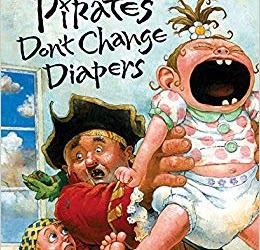
Story Elements: setting, characters, problem, actions, plan, obstacle, solution, ending, feelings
Story Discussion: After reading or listening to both Pirate stories, you could ask your child, “How are the books the same? How are they different? Which one did you like better? Why?”
